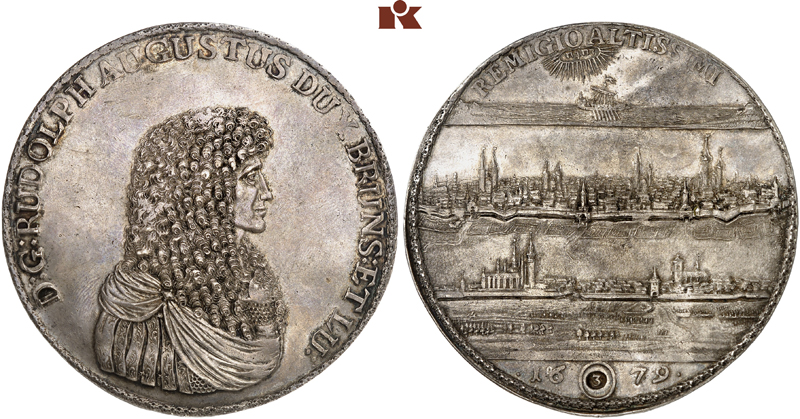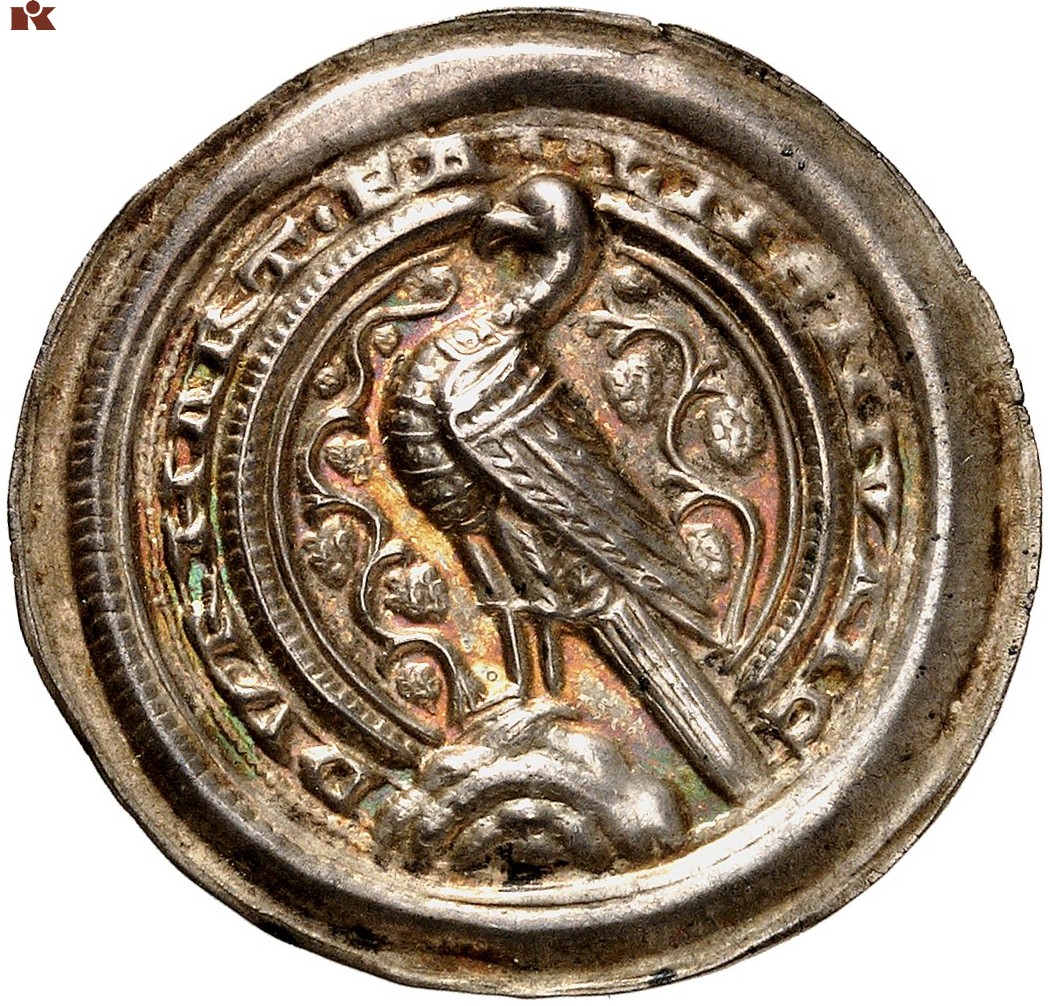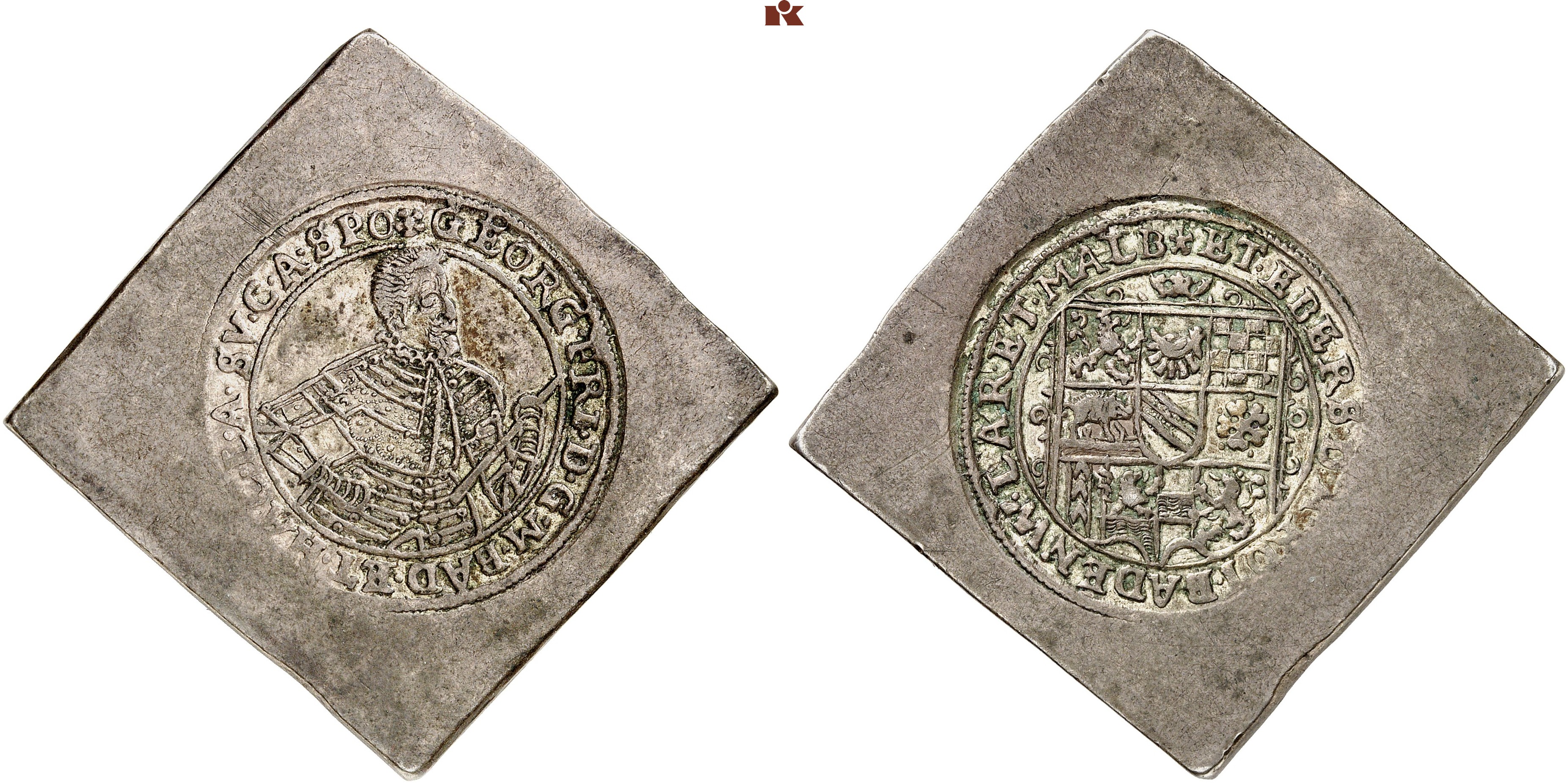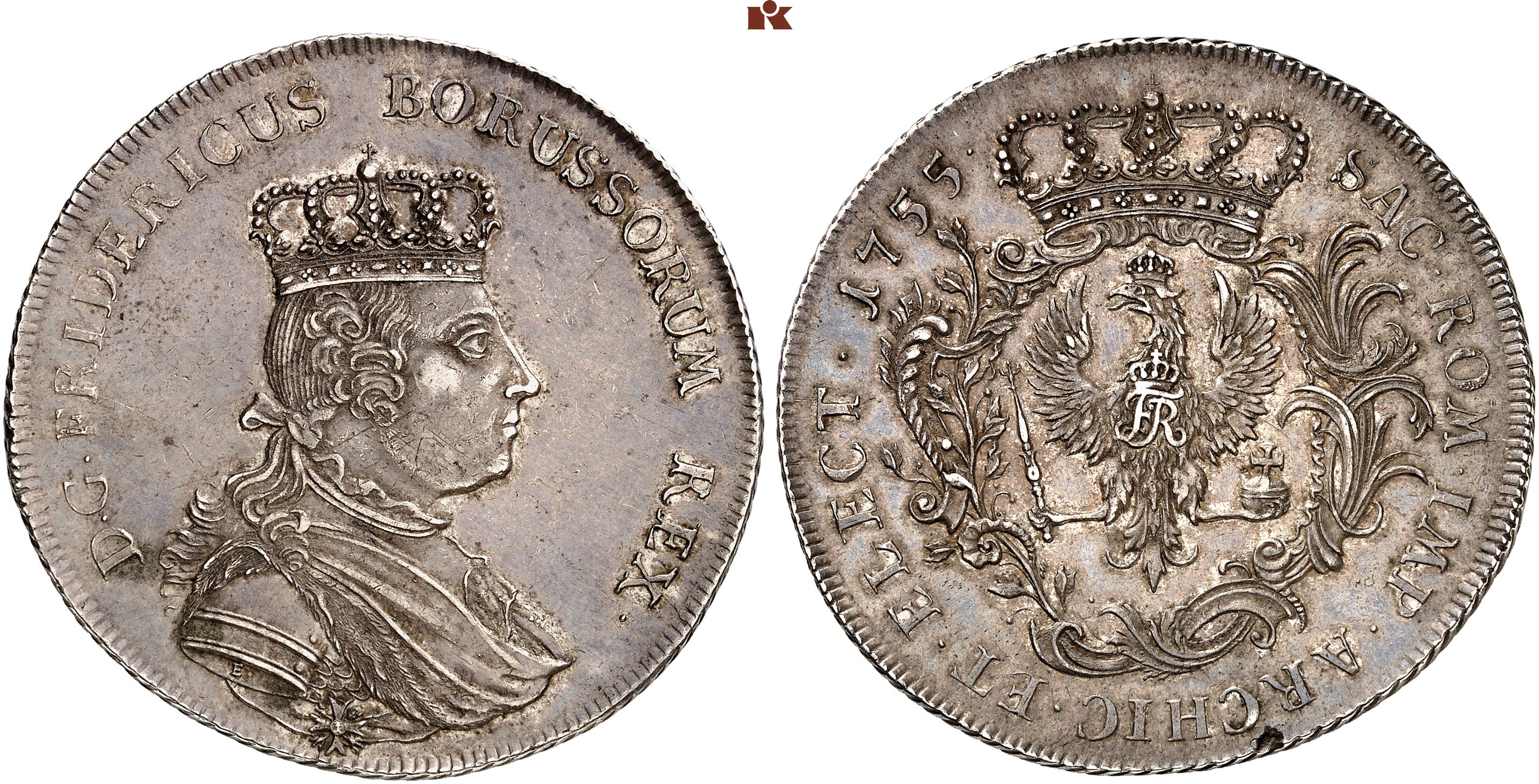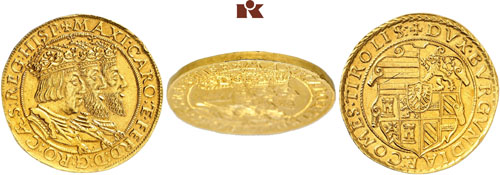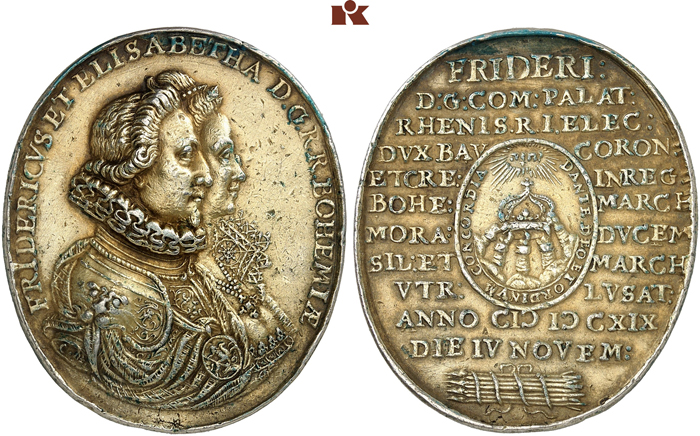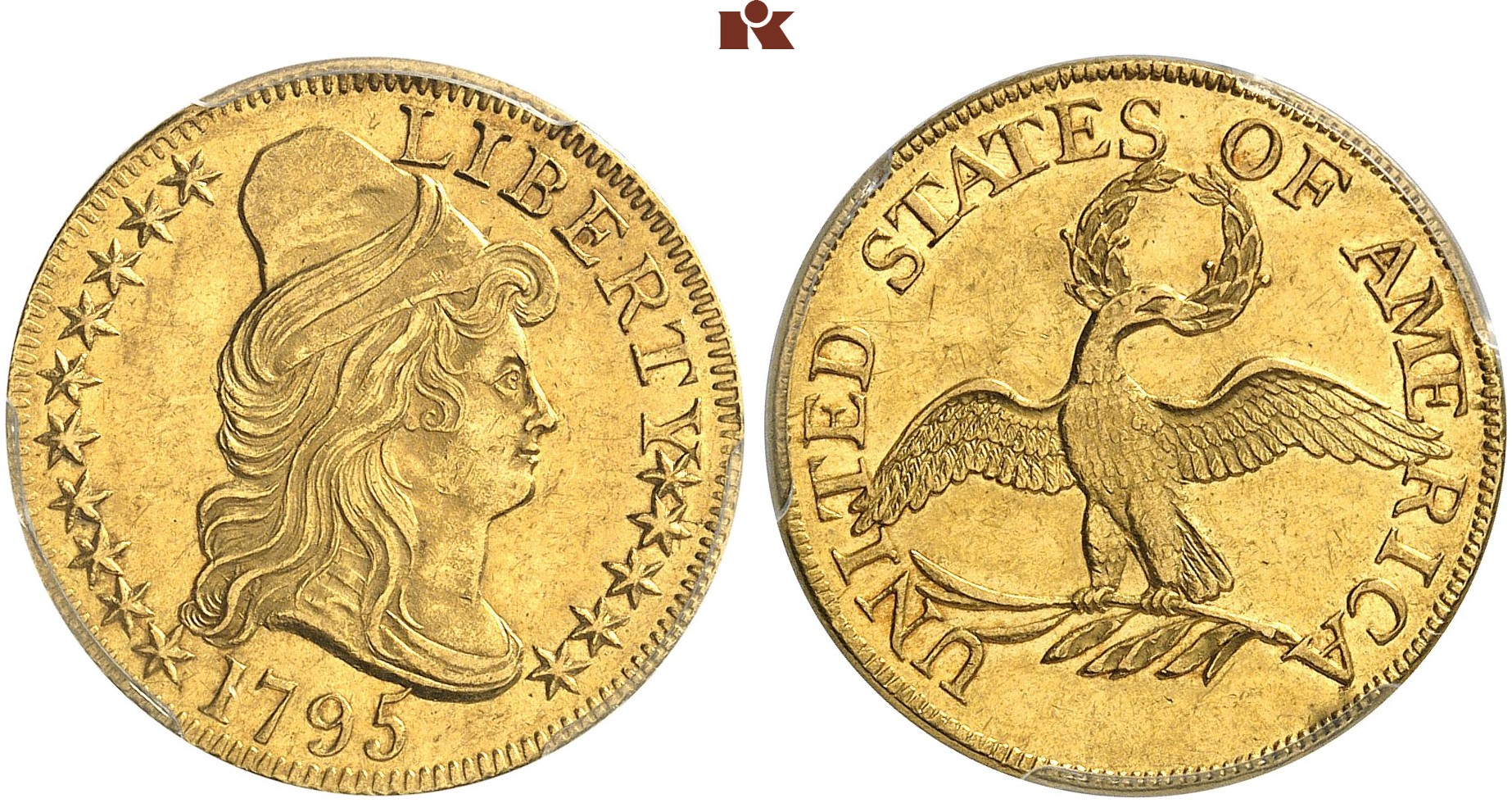The 300th Künker Auction: A Highlight of the World Money Fair
15. December 2017
On February 1, 2018 as many as three auctions will take place under the program of the World Money Fair featuring 1,113 lots of world coins and medals. The day starts with Jubilee Auction 300, which offers the top pieces from the Gunther Hahn Collection of Coins and Medals from Brandenburg-Prussia. Auction 301 is dedicated to the 65 bracteates from the Prof. Helmut Hahn Collection and to 150 rarities of princes and cities of Lower Saxony from from the Friedrich Popken Collection. Auction 302 comprises rare world coins and medals, including a collection of British 2 guineas and 2 pounds by type. The day ends with a selection of coins and medals from Russia.
Auction 300: Top Pieces of Brandenburg-Prussia - The Gunther Hahn Collection
In the morning of February 1, 2018 Künker can celebrate an anniversary. This will be the 300th sale conducted by the Osnabrück auction house. The coins and medals offered in this auction refer to this event’s importance. The top pieces from the Gunther Hahn Collection of Brandenburg-Prussia will come under the hammer: 216 lots with a pre-sale estimate total of 1 million euros. This figure speaks for itself. The chronological spectrum ranges from a gold gulden of the Brandenburg Burgrave Friedrich V of Nuremberg (1361-1397) to a gold medal in the weight of 10 ducats featuring the portrait of Emperor Wilhelm II (1888-1918).
The focus is placed on the era when the Brandenburg Elector had not yet become King of Prussia. One thing is for sure: it is difficult to decide which pieces to present in this preview, for the selection of rarities offered is enormous. Of course, the most expensive item of the auction has to be mentioned: a 1570 portugaleser of Joachim II. It played a pivotal role in a trial of the Jewish factor of this Elector, and so we know that the Elector gave away such portugalesers on the evening of his death (estimate: 200,000 euros).
The obverse of an extremely rare 1590 ducat of Johann Georg features his cuirassed half-length bust (estimate: 25,000 euros). An extremely fine double gold gulden of Georg Wilhelm from 1621 is also estimated at 25,000 euros. 30,000 euros is the estimate of a 10 ducats from 1658 that was issued by the Great Elector on the achievement of sovereignty in the Duchy of Prussia.
By the way, the auction sale will also include a large series of rarities of Frederick II. That is why we conclude our preview of Künker Auction 300 with a perfect double friedrichs d'or minted in Cleve in 1763 that is estimated at 25,000 euros.
Auction 301: Selected bracteates from the Professor Helmut Hahn Collection / 150 rarities from the Lower Saxon region from the Friedrich Popken Collection
Do you like bracteates? Then you will almost feel entranced at the sight of the quality of the selected coins from the Professor Helmut Hahn Collection. It's an assemblage so densely packed with beauty and rarity only seldom to be encountered.
What to start with? With the royal bracteate of Conrad III featuring the ruler with sword and flag lance within a grand architecture? Only three specimens are known to exist of this type. The estimate amounts to 25,000 euros. Or with the bracteate of Burkhard II, Count of Falkenstein, minted in Ermsleben? It is estimated at 20,000 euros. Depicting the multi-figured martyrdom of St. Laurence watched by the Bishop of Merseburg in the presence of the Saint, a perfect bracteate from Merseburg has a pre-sale appraisal of 12,500 euros.
Once again, we have only mentioned the most expensive coins here, which should not obscure the fact that these artistically sophisticated objects are also available for significantly less money: the estimates start at a mere 150 euros.
From the Middle Ages right into early modern times, this is where the Friedrich Popken Collection takes us, consisting of 150 rarities from princes and cities of Lower Saxony. Once again, we have no other option but to illustrate the quality of the specimens offered by stating the price. The estimates for 28 lots – nearly 20 % – range in the five-digit region!
But first of all, here is a list of all the cities and domains from which the coins are coming: Brunswick, Einbeck, Göttingen, Goslar, Hameln, Hanover, Hildesheim, Lüneburg, and Northeim.
Estimated at 50,000 euros, the most expensive piece originates from the city of Hildesheim. It is a donative, a gold coin in the wheight of 10 ducats, minted in 1618. Its reverse features a magnificent depiction of Emperor Rudolf II mounted on a rearing horse. His posture recalls St. George the Dragon Slayer, even if the spear was replaced by a commander’s baton. The motif is clearly a reflection of the earliest stages of the 30 Years’ War in which the Emperor from the House of Habsburg staged himself as the leader of the Catholics.
The secret favorite of the writer of these lines is a 1671 reichstaler from Northeim. It shows the city’s coat of arms: a five-towered archway through which a lion paces to the left, thus recalling the late medieval custom of building a lion’s den in the city moat. This rarity is estimated at 20,000 euros.
No. 823: Hameln. Mule double taler 1616/7. Extremely rare. Very fine+. Estimate: 30,000,- euros
No. 899: Northeim. Reichstaler 1671. Very rare. Very fine. Estimate: 20,000,- euros
Auction 302: Numismatic rarities from around the world / Russian coins and medals
In the afternoon of February 1, 2018 Auction 302 will take place. And if one thing holds true, it is the title “Rarities from around the world”. The pre-sale estimate total again testifies to this: 4 million euros for 523 lots.
Let us have a look at the German States first, which account for almost half of the material with their 245 lots. There are rarities from many German minting authorities, the main focus being placed on Baden and Brandenburg-Prussia with a speciestaler and a levantetaler of Frederick II; but also the collectors of coins from Saxony will get their money’s worth. A special highlight of the Saxon department is a gnadenpfennig of Johann Georg I.
Let us make the price once again the criterion upon which to choose the pieces to present in greater detail. Two lots will be called out for 50,000 euros: the above mentioned extremely fine 1755 speciestaler of Frederick II of Prussia and a 5 ducats piece of Ferdinand of Bavaria as Bishop of Münster, minted in 1638 and also graded extremely fine.
40,000 euros is the estimate of further two specimens: an extremely rare and very attractive double reichstaler of Maximilian I of Bavaria, struck for the Rhenish Palatinate in Heidelberg in 1627, and a gold medal of 15 ducats of the Bishop of Passau, Johann Philipp of Lamberg, a superb example of the artistic skill of the die cutter P.H. Müller.
By this, we have arrived at the 100 lots of coins and medals of the Holy Roman Empire. The highlight is a 12 ducats piece from 1687 of Archbishop Johann Ernst of Thun and Hohenstein featuring the two patron saints of the diocese (estimates: 50,000 euros).
The 169 lots of world coins and medals have a whole range of exceptional rarities in store, as it is only seldom encountered. Let us start our numismatic journey in Belgium, with the 8 souverain d'or of Charles II of Spain, struck in Bruges in 1694 (estimate: 30,000 euros). From there we cross the Channel and reach Great Britain. From there, a collection of 2 guineas and 2 pounds comes featuring many a rarity, such as an extremely fine to FDC 2 guineas 1711 of Queen Anne (estimate: 30,000 euros), or an extremely fine pattern for 2 guineas 1777 of George III (estimate: 80,000 euros). Returning to the Continent, we arrive at the Netherlands, at the city of Deventer. Intending to make good money with the trade with Brazil, a couple of local businessmen ordered portugalösers in the wheight of 10 ducats around 1640/41. According to the mint master, no more than 10 to 20 specimens were produced, some of which were then melted down when the Dutch government prohibited their production. Formerly part of the Marques da Costa Collection, only one single specimen apparently has survived the passage of time. And this is exactly the one offered in this Künker sale, estimated at 200,000 euros.
This story is illustrating the fact that colonies had difficulties to get enough cash. Australia is another example. There the well-known holy dollars have achieved iconic status in Australian numismatics. In Auction 302, Künker offers both: holey dollar (estimate: 100,000 euros) and dump (40,000 euros).
The numismatic journey continues in the United States of America. Künker again offers a large selection of early and rare gold coins from the newly-established Federation. Most likely to top item is a 5 dollars 1795 “capped bust”, graded MS61 by PCGS (estimate: 30,000 euros).
Russia concludes both the trip and the 2018 Künker Berlin Auction. There are 112 lots to choose from. Chronologically, the spectrum ranges from the counter stamped talers of Tsar Alexei Mikhailovich to commemorative coins from the Soviet Union. The most expensive piece is a so-called Trubetskoy roubel, which is actually a counterfeit of the extremely rare and historico-numismatically highly interesting Constantine roubel that has gained a high numismatic value of its own: the Russian Consul in Marseille had the piece produced around 1870 and tried to sell it to collectors. They are just as rare as the original. The estimated price amounts to 150,000 euros.
Let us conclude the preview of Auction 302 with a medal: a 1903 Russian gold medal in the weight of 176.49 g that commemorates the completion of the bridge across the Neva River.






